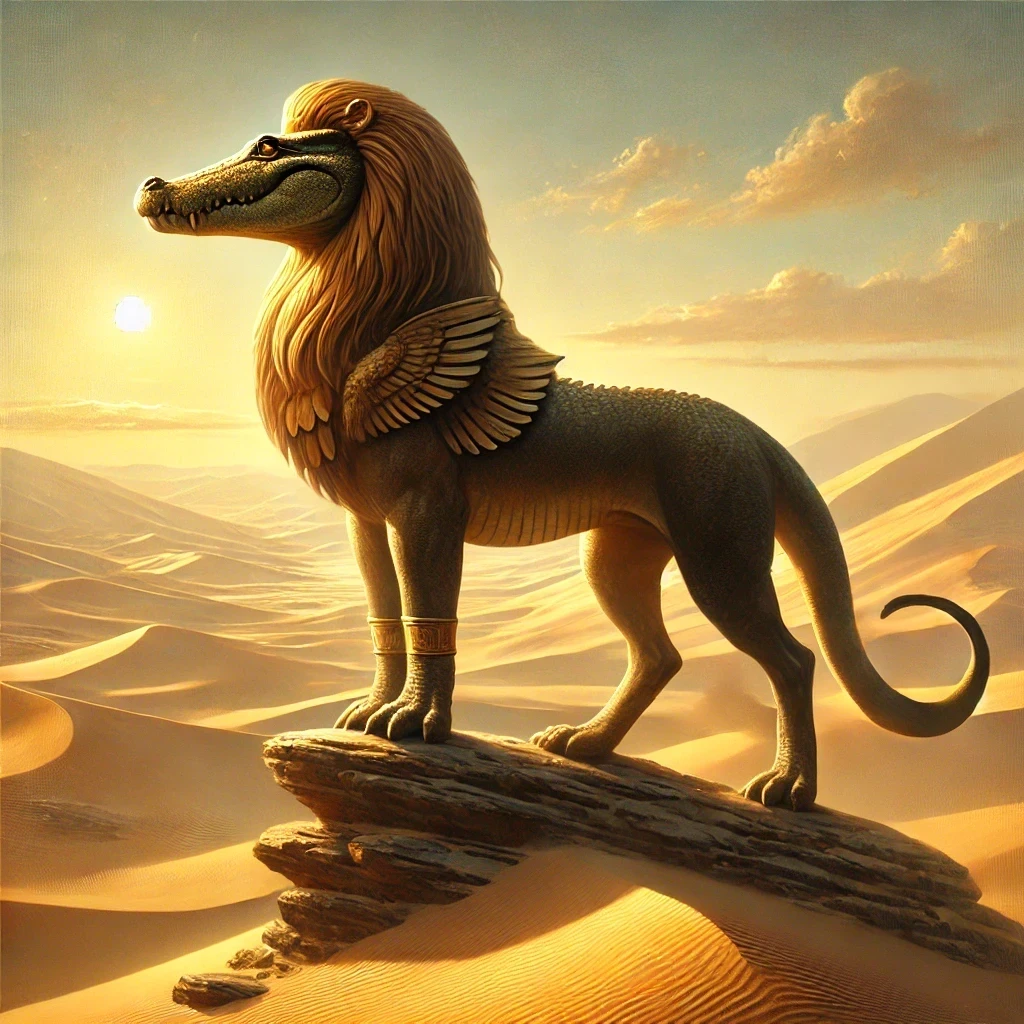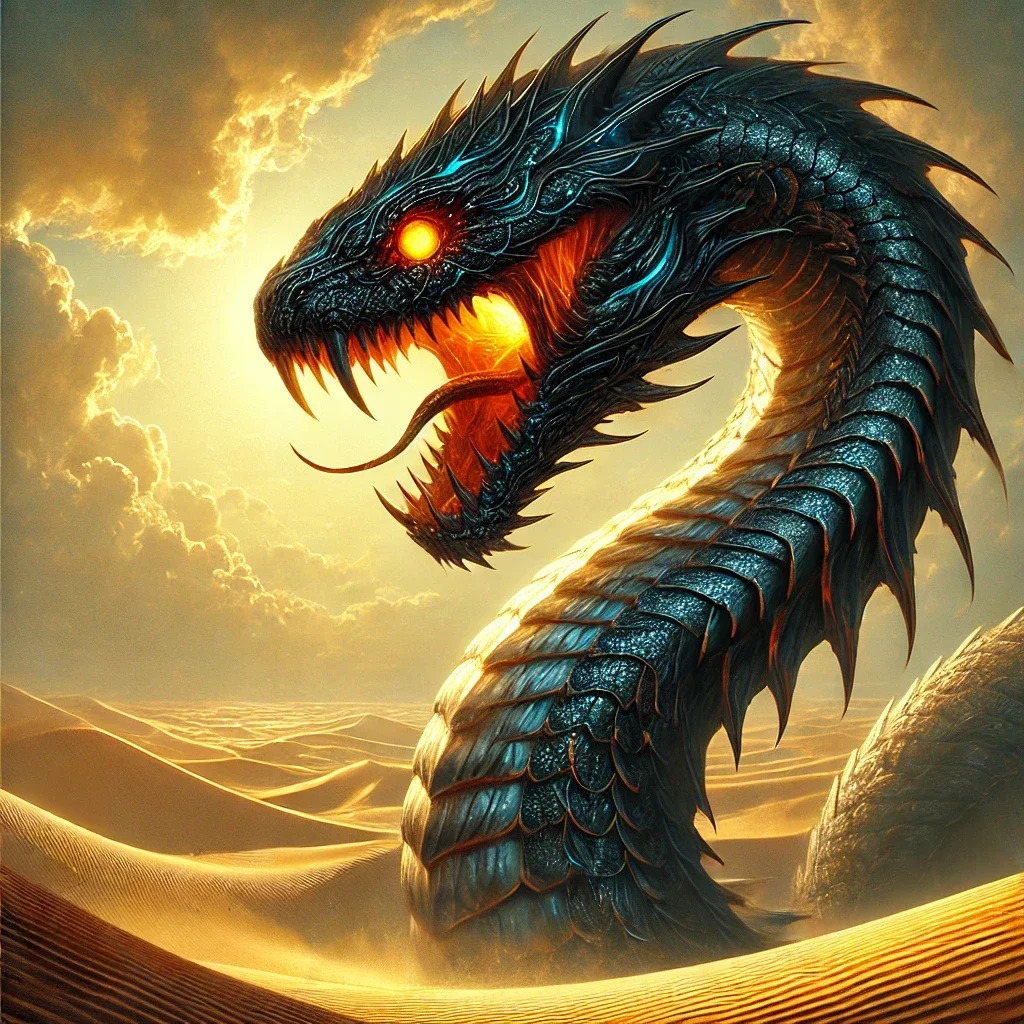In the vast and captivating pantheon of Egyptian mythology, few entities evoke as much fascination and dread as Ammit. Known as the “Devourer of the Dead,” this enigmatic creature straddles the line between myth and moral warning, a living embodiment of cosmic justice in the afterlife. To understand her place in the intricate tapestry of ancient Egypt is to explore a creature that is both fearsome and symbolic, a reminder of the consequences of a life poorly lived.
Origins
Ammit’s origins are deeply entwined with the beliefs of ancient Egypt, particularly the practices and concepts surrounding death and judgment. Her presence is most prominently felt in the “Weighing of the Heart” ceremony, a ritual integral to determining the fate of a soul in the afterlife.
Connections to Ma’at and the Weighing of the Heart
Central to ancient Egyptian cosmology was the principle of Ma’at, representing truth, balance, and order. During the Weighing of the Heart, the deceased’s heart was placed on a scale opposite the feather of Ma’at. A heart heavy with sin would tip the scales, condemning the individual. This is where Ammit played her crucial role: as the executioner of justice, devouring unworthy hearts and condemning souls to eternal unrest.
Historical Mentions
While Ammit herself was not worshiped as a deity, she was revered as a vital part of the moral fabric of Egyptian society. Depictions of the Weighing of the Heart ceremony, featuring her terrifying form, can be found in numerous versions of the “Book of the Dead,” emphasizing her role as a guardian of ethical integrity.

Appearance
Ammit’s appearance is a composite of some of the most fearsome animals known to ancient Egyptians, embodying the qualities they most feared and respected.
The Hybrid Form
Ammit’s form is a striking amalgamation of a lion, a crocodile, and a hippopotamus. Her head, with its powerful jaws, resembles that of a crocodile, a creature associated with both death and rebirth. Her body is often depicted with the muscular forequarters of a lion, symbolizing strength and ferocity, while her hindquarters resemble a hippopotamus, an animal known for its aggressive nature and connection to the Nile’s life-giving waters.
Artistic Representations
Ammit’s image is frequently found in papyri and temple carvings, always positioned near the scales of Ma’at. These depictions emphasize her role as a deterrent to moral corruption, her fearsome form designed to inspire awe and obedience.
Symbolism
Ammit’s significance goes far beyond her fearsome appearance. She serves as a multifaceted symbol within Egyptian mythology, blending themes of justice, fear, and morality.
The Embodiment of Retribution
As the Devourer of the Dead, Ammit’s role was clear: to consume the hearts of those deemed unworthy, ensuring that only the righteous could proceed to the afterlife. This act of retribution served as a powerful warning to the living, emphasizing the importance of ethical conduct.
A Guardian of Ma’at
Ammit’s association with Ma’at underscores her role as a protector of cosmic balance. Her presence in the Weighing of the Heart ceremony reinforced the idea that justice was not only divine but also inescapable.

Abilities
While Ammit’s primary role was symbolic, her abilities in Egyptian mythology reflect the fears and beliefs of a society deeply concerned with moral order and the afterlife.
Soul Consumption
Ammit’s defining ability was the consumption of hearts, an act that symbolized the annihilation of a soul. Unlike other punishments in Egyptian mythology, this was a final and irrevocable act, erasing any chance of redemption or rebirth.
Psychological Power
Beyond her physical role, Ammit held immense psychological power. Her existence alone served as a deterrent, encouraging individuals to lead virtuous lives to avoid her eternal judgment.
Tales
Though Ammit’s role is largely defined within the context of the Weighing of the Heart, her presence permeates Egyptian mythological narratives, serving as a silent enforcer of Ma’at.
The Judgment of the Deceased
In countless retellings of the journey to the afterlife, Ammit’s shadow looms large. One particularly vivid account involves a deceitful scribe whose lies and treachery in life weighed heavily on his heart. As the scales tipped against him, Ammit’s jaws closed around his essence, a vivid reminder of the consequences of living without integrity.
A Silent Witness
Ammit’s presence in Egyptian texts is often silent yet profound. Unlike gods who intervene or interact, she waits at the scales, her stillness amplifying the gravity of the moment.

Relationships
Ammit’s connections to other figures in Egyptian mythology highlight her unique position as a creature of judgment rather than worship.
The Gods of Judgment
Ammit worked closely with Anubis, the jackal-headed god of embalming and the afterlife. Anubis weighed the heart, and Ammit awaited the result, a partnership that underscored the balance between mercy and justice. Thoth, the ibis-headed god of wisdom, also played a role by recording the outcome, completing the triad of judgment.
Not a Deity
Unlike most figures in Egyptian mythology, Ammit was not worshiped. Her role was functional, serving the gods and the greater concept of Ma’at. This distinction sets her apart from other mythological creatures and emphasizes her symbolic nature.
Trivia
Ammit’s legacy extends beyond ancient Egypt, leaving traces in modern culture and interpretations of justice and morality.
A Cultural Icon
Though not as well-known as figures like Anubis or Ra, Ammit’s image has appeared in modern media, from films to video games, often as a symbol of ultimate judgment.
Etymology
The name “Ammit” can be translated as “Devourer” or “Soul-Eater,” reflecting her primary function. This linguistic simplicity belies her complex symbolic role.
Influence on Other Cultures
Elements of Ammit’s narrative can be found in other mythologies, including Greco-Roman depictions of the afterlife. The concept of a creature punishing the wicked resonates across cultures, speaking to universal concerns about justice and morality.



